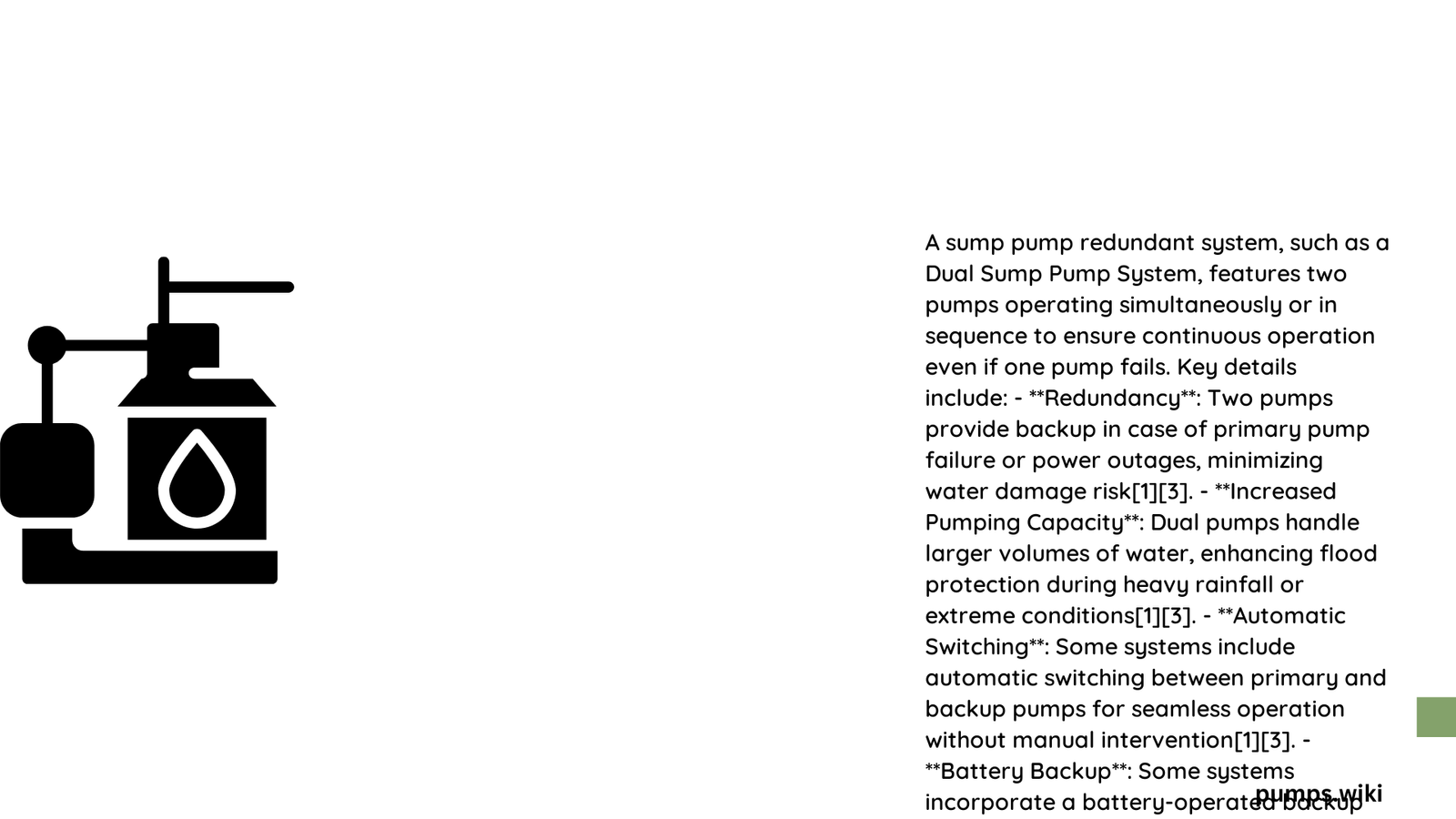A sump pump redundant system represents the gold standard in basement water management, offering homeowners a comprehensive defense against potential flooding. By integrating primary and backup pump technologies with advanced monitoring capabilities, this system ensures continuous water removal even during power outages or primary pump failures. Homeowners can protect their property, prevent water damage, and maintain peace of mind with a strategically designed redundant sump pump solution.
What Makes a Sump Pump Redundant System Critical?
Water damage can devastate a home’s foundation, leading to costly repairs and potential structural compromise. A sump pump redundant system provides multi-layered protection through strategic pump configurations and backup mechanisms.
Why Choose Dual Pump Technology?
Performance Comparison: Single vs. Redundant Systems
| System Type | Flood Risk | Pump Lifespan | Maintenance Cost |
|---|---|---|---|
| Single Pump | High | 5-7 years | Higher |
| Redundant System | Low | 8-12 years | Lower |
Key Advantages of Redundant Sump Pump Systems
- Continuous Water Removal
- Primary pump handles standard water drainage
- Battery-powered backup ensures operation during power failures
-
Seamless transition between pumps prevents basement flooding
-
Extended Equipment Longevity
- Shared workload reduces individual pump stress
- Distributed water removal extends overall system lifespan
- Reduces wear and tear on individual components
How Does Battery Backup Function?
Battery backup systems typically include:
– 12-Volt DC power source
– Deep cycle battery
– Automatic switching mechanism
– LED status indicators
– Alarm systems for low battery and high water levels
What Technical Specifications Matter?
Recommended Pump Specifications
- Primary Pump
- 1/2 HP motor
- Cast iron housing
- 120 Volt AC
-
Flow rates from 1500-4320 GPH
-
Backup Pump
- 12 Volt DC
- Flow rates from 360-2340 GPH
- Vertical float switch
- Thermoplastic base
What Installation Considerations Exist?
Successful sump pump redundant system implementation requires:
– Minimum 18-inch sump basin
– Separate discharge lines
– Individual check valves
– Proper float switch configuration
– Regular maintenance schedule
How Often Should Maintenance Occur?
- Monthly system testing
- Quarterly battery voltage checks
- Annual professional inspection
- Replace batteries every 3-5 years
- Clean pump and basin annually
What Potential Challenges Exist?
- Air lock prevention
- Battery performance monitoring
- Proper switch alignment
- Discharge pipe configuration
- Consistent system testing
Cost-Benefit Analysis
While initial investment might seem high, a redundant sump pump system offers significant long-term benefits:
– Prevents potential $10,000+ water damage repairs
– Reduces insurance claim risks
– Protects home’s structural integrity
– Provides continuous water management
Expert Recommendations

Homeowners should prioritize:
– Professional installation
– Quality components
– Regular maintenance
– Comprehensive system monitoring
Final Thoughts
A sump pump redundant system represents more than equipment—it’s a strategic investment in home protection, offering peace of mind and comprehensive flood prevention.
